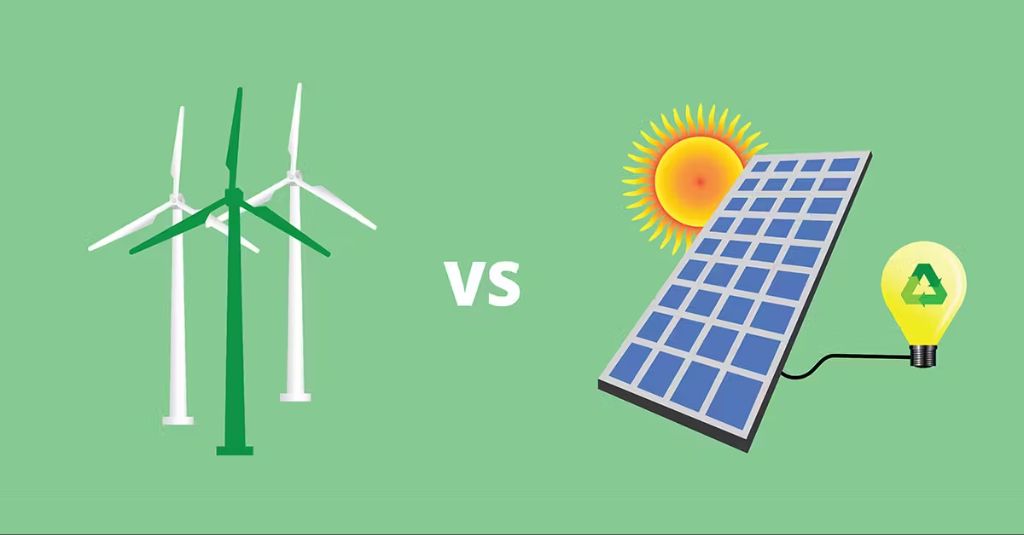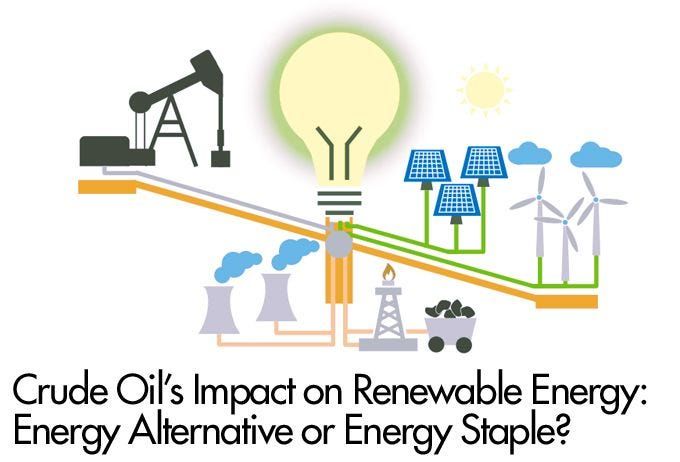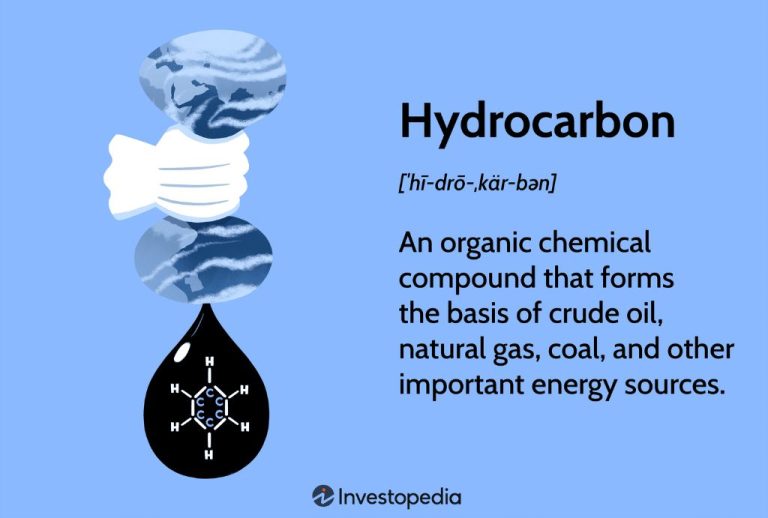Is Renewable Energy Good
Renewable energy sources like solar, wind, and hydropower are widely touted as a solution to humanity’s pressing climate and sustainability challenges. However, transitioning the world’s energy systems away from fossil fuels and toward cleaner alternatives is no simple task. It requires enormous financial investments, changes to infrastructure and regulations, not to mention overcoming skepticism about the reliability and affordability of solar panels, wind turbines, and other renewable technologies. So are renewable energy sources truly living up to their promise of providing sustainable, low-carbon power? In this post, I’ll take a deeper look at both the arguments for and against renewable energy to help shed light on this complex debate and the critical questions shaping our energy future.
Is Renewable Energy Friendly For Environment?
Renewable energy is widely regarded as one of the most environmentally friendly sources of power available today. Unlike fossil fuels, renewable energy sources produce no harmful emissions or pollutants that can contribute to air pollution and the greenhouse effect.
For instance, solar energy has proven to be highly effective in reducing the carbon footprint of homes and businesses. Solar panels capture and convert the sun’s energy into electricity without the use of fossil fuels, and they produce no emissions. In fact, a single kilowatt-hour of solar energy generated can prevent the release of nearly one pound of carbon dioxide into the atmosphere.
Similarly, wind turbines pose no harm to the environment and do not contribute to air or water pollution. Furthermore, wind power is one of the most efficient forms of energy available, often producing more energy than it consumes.
Hydropower is another source of renewable energy that has minimal impact on the environment. Its ability to produce clean, reliable and cost-effective electricity has made it increasingly popular in recent years, with nearly 16% of the world’s electricity generated by hydropower.
The use of renewable energy sources also plays a vital role in the preservation of ecosystems and biodiversity. The extraction and burning of fossil fuels not only leads to pollution, but it also causes destruction of natural habitats, which can have severe consequences on the environment and wildlife. Renewable energy, on the other hand, requires minimal impact on land use, and its development generally poses little threat to wildlife or their habitats.
Renewable Energy Reduce Pollution Long Term
Renewable energy sources have been proven to significantly reduce pollution in the long-term. Fossil fuels produce harmful emissions and pollutants that not only harm the environment but also contribute to the greenhouse effect. In contrast, solar, wind, and hydropower generate clean energy without releasing any pollutants into the atmosphere. The use of solar panels, for example, can lead to a reduction of greenhouse gas emissions by as much as 80%. With a reduction of harmful emissions, the impact on the environment is minimized, and the health of the individuals living in the surrounding area is improved.
Renewable energy also reduces the dependence on fossil fuels, which play a major role in climate change. Climate change poses an existential threat to our planet, and reducing the use of fossil fuels is essential in avoiding catastrophic consequences. The continued use of fossil fuels leads to the depletion of natural resources and, therefore, the degradation of the environment. Renewable energy, on the other hand, is sustainable and does not lead to the depletion of natural resources, either through extraction or consumption.
Moreover, the use of renewable energy sources is associated with a decrease in the cost of electricity, which can ultimately benefit consumers. For instance, investing in solar panels can lead to a significant reduction in electricity bills, with studies demonstrating a decrease of up to 90% in some cases. Hydropower is also significantly cheaper than fossil fuel-based electricity generation, making it an attractive option for countries looking to reduce their carbon footprint and transition towards a cleaner energy system.
Solar And Wind Power Becoming Affordable Options
In recent years, we have witnessed a rapid decline in the cost of renewable energy sources such as solar and wind power, making them increasingly viable options for powering our homes and businesses. The cost of solar panels has plummeted by more than 70% in the past decade, bringing the price of solar energy to record lows that are now competitive with traditional fossil fuel sources in many countries around the world. Wind energy has also seen substantial cost reductions over the years, with the cost of producing wind power falling by almost 40% since 2010.
One of the key drivers of this affordability is advancements in technology. Ongoing research and development efforts have led to significant improvements in the efficiency and performance of solar panels and wind turbines, allowing them to generate more energy at a lower cost. Furthermore, economies of scale have played an important role in reducing the cost of renewable energy systems, as the deployment of larger installations has helped to drive down production costs and increase efficiency.
The benefits of this affordability extend well beyond the environmental impact of reducing carbon emissions. With energy costs accounting for a substantial portion of household and business expenses, the decreasing cost of renewable energy means that more people can afford to switch to cleaner power sources. This affordability can also help to ease concerns around energy poverty, particularly in developing countries where access to reliable and affordable electricity is still limited.
In addition to providing cost savings for consumers and businesses, renewable energy sources can also generate significant economic benefits. The renewable energy sector is a significant employer, with millions of people working in jobs related to solar, wind, and hydropower projects. Additionally, the transition to renewable energy can create new opportunities for innovation and technological advancement, driving economic growth and creating new markets for green technologies.
Overall, the decreasing cost of renewable energy sources like solar and wind power offers a promising future for sustainable, low-carbon power. With continual advancements in technology and increased investment in renewable energy, more people and countries can transition to cleaner energy sources at an affordable cost, paving the way towards a more sustainable future.
Government Incentives Help Transition To Green Energy
Studies have shown that government incentives can play a crucial role in accelerating the transition to renewable energy sources. By providing financial incentives, such as tax credits and subsidies, governments can help to level the playing field between traditional fossil fuel sources and cleaner alternatives. These incentives can make it more financially viable for individuals and businesses to invest in renewable energy systems, helping to overcome some of the initial cost barriers that may prevent adoption.
For example, in the United States, the federal government offers a number of tax incentives to individuals and businesses that invest in renewable energy technologies. The Investment Tax Credit (ITC) provides a 26% tax credit for the cost of installing solar energy systems for residential and commercial properties. Similarly, the Production Tax Credit (PTC) provides a tax credit of $0.01-$0.025 per kilowatt-hour of wind energy produced, and the Qualifying Advanced Energy Project Credit provides a tax credit of up to 30% for qualifying advanced energy projects.
Government incentives can also take the form of direct subsidies, where governments provide financial support to renewable energy projects. In Europe, for example, the European Union’s Renewable Energy Directive requires member states to increase the use of renewable energy sources to 32% by 2030. To help achieve this goal, the EU provides financial support to member states to develop renewable energy projects, with the aim of creating a more level playing field between traditional energy sources and renewable energy.
Aside from cost savings, government incentives can also help to stimulate innovation in the renewable energy sector. By providing financial support to research and development (R&D), governments can help to accelerate advancements in renewable energy technologies, driving down costs and increasing their efficiency. For example, the U.S. Department of Energy’s SunShot Initiative provided $2.2 billion in funding for R&D efforts focused on reducing the costs of solar energy systems.
Renewable Can Power Homes Without Fossil Fuels
Renewable energy is a powerful tool in the fight against climate change as it can help to reduce our reliance on fossil fuels. Homes can be powered without the use of fossil fuels through the installation of solar panels, wind turbines, and hydropower systems. Solar panels can be installed on rooftops and can generate electricity using the sun’s energy. Wind turbines can be installed in open areas with high wind speeds, and hydropower systems can be installed in rivers and streams to generate electricity using the flow of water.
One of the major benefits of renewable energy is that it drastically reduces greenhouse gas emissions. Fossil fuels, such as coal and oil, release carbon dioxide and other harmful gases into the atmosphere when burned to generate electricity. These emissions contribute to global warming and climate change. Renewable energy sources, on the other hand, do not produce any harmful emissions and are therefore considered a more sustainable and environmentally-friendly option.
Renewable energy also provides a reliable source of electricity. Unlike fossil fuels that are subject to price fluctuations and supply chain disruptions, renewable energy sources can provide a consistent and steady stream of electricity without requiring any external input. This helps to ensure energy security and stability for homes and businesses.
Furthermore, renewable energy has the potential to revolutionize energy access in rural and developing areas. Many rural communities still lack access to reliable electricity, and renewable energy can provide a sustainable and affordable solution. Solar panels and wind turbines can be installed in remote areas to provide electricity without the need for expensive and unreliable diesel generators.
Investing Renewable May Lower Electric Bills Over Time
Investing in renewable energy sources has the potential to significantly lower electric bills over time. While the upfront cost of installing solar panels or wind turbines can be steep, the long-term savings on energy bills can quickly offset the expense. In fact, studies have shown that homeowners who install solar panels can save an average of $100 per month on their electricity bills.
Additionally, as the demand for renewable energy continues to grow, the cost of solar panels and wind turbines has steadily decreased. This means that investing in renewable energy sources is becoming more accessible to the average homeowner or business owner.

Furthermore, renewable energy sources have the potential to allow communities and businesses to generate their own electricity, which can reduce their dependence on the electrical grid. This can help to reduce the strain on the electrical grid during peak demand periods, which can also lead to lower electric bills for all consumers.
Moreover, renewable energy sources are not subject to the same price fluctuations as fossil fuels. The price of coal and oil can vary greatly depending on supply and demand, geopolitical tensions, and other factors. Renewable energy sources, on the other hand, provide a stable and predictable source of electricity without relying on external factors.
Renewable Sources Last Forever Unlike Coal And Gas
Renewable energy sources have a significant advantage over fossil fuels, which is their infinite supply. Unlike coal and gas, renewable sources such as solar, wind, and hydropower do not deplete with use. They derive their energy from the sun, wind, or water, which are unending resources that persistently provide power for free. This means that these sources of clean energy will never run out or diminish in quality, making them a lasting solution to meeting our energy needs while reducing our impact on the environment.
The finite nature of fossil fuels is a major concern as it leads to price volatility and, at times, supply chain disruptions. This volatility is often exacerbated by geopolitical tensions, trade wars, and oil cartel policies that prioritize profit over long-term sustainability. Renewable energy sources, however, provide a stable source of energy that does not rely on external factors. This means that the cost of renewable energy is less susceptible to fluctuations in the market, and that renewable energy can provide a more secure and reliable source of energy in the long run.
Moreover, the use of renewable energy sources provides a significant economic advantage over the use of fossil fuels. The International Renewable Energy Agency (IREA) estimates that by transitioning to renewable energy, the global economy could see a net gain of $98 trillion by 2050, in comparison to business as usual. This gain would be achieved through a combination of savings from reducing carbon emissions and the creation of new jobs that would stimulate economic growth.
Additionally, renewable energy sources can bring about a more decentralized and democratized energy system, where individuals and communities can generate their own power, reducing the need for traditional grid infrastructure. This reduces the reliance on centralized power generation, leading to a more resilient and responsive energy system that can better handle extreme weather events and other disruptions.
Renewable Development Create Green Jobs Opportunities
Renewable energy development not only provides a sustainable and low-carbon source of power, but it also creates significant job opportunities. A report by the International Renewable Energy Agency (IREA) estimates that by transitioning to renewable energy, the global economy could see the creation of over 42 million new jobs by 2050. This is a significant number and highlights the potential for renewable energy to become a major driver of economic growth in the coming years.
The shift towards renewable energy sources is also expected to create jobs that are more decentralized and locally focused, allowing for greater community control over power generation and distribution. These green jobs are often well-paying and can provide local communities with a reliable source of income, especially in rural areas where traditional job opportunities may be limited.
Furthermore, renewable energy development creates jobs across the entire value chain, including manufacturing, installation, maintenance, and support services. For example, the production of wind turbines and solar panels requires skilled labor in fields such as engineering, materials science, and manufacturing. Similarly, the installation and maintenance of renewable energy infrastructure create jobs in construction and technical services.
Green jobs and the economic benefits of renewable energy are often overlooked, but they play a crucial role in moving towards a more sustainable future. By creating stable, well-paying jobs, renewable energy can help to stimulate economic growth, reduce unemployment, and promote environmental sustainability. As the demand for renewable energy continues to grow, there will undoubtedly be an increasing need for skilled workers to build and maintain the infrastructure necessary to power a more sustainable future.
Renewable Helps Energy Independence And National Security
Renewable energy sources like solar, wind, and hydropower offer more than just a sustainable and low-carbon source of power and job creation. They also contribute significantly to energy independence and national security. Dependence on fossil fuels and importing oil from other countries can leave a nation vulnerable to geopolitical tensions and supply disruptions. Renewable energy, on the other hand, is domestically sourced and essentially inexhaustible, making it a reliable and secure source of energy for nations.
According to a report by the National Renewable Energy Laboratory (NREL), the US has enough renewable resources to generate over four times the amount of electricity it currently consumes. The use of renewable energy sources can reduce dependence on foreign oil and enhance national security by making the country less vulnerable to global oil price fluctuations and supply interruptions. Renewable energy sources are not subject to the same transportation and distribution limitations as oil, gas, and coal, as the former can be harnessed and distributed locally.
In addition, renewable energy sources offer greater flexibility when it comes to deployment in both urban and rural areas. Solar panels, wind turbines, and hydropower systems can be installed closer to where energy is needed, reducing the need for long transmission lines that are susceptible to physical damage or cyber threats.
Furthermore, the use of renewable energy sources can also help minimize environmental damage caused by fossil fuel extraction and transportation. Pollution, deforestation, and damage to aquatic ecosystems are just a few of the negative impacts that can be mitigated or avoided altogether by transitioning to renewable energy sources.
Using Renewable Means Taking Small Steps For Our Planet
Using renewable energy sources is a crucial step towards reducing our carbon footprint and mitigating the harmful impacts of climate change. By replacing non-renewable sources of energy like coal, oil, and gas with sustainable alternatives such as solar, wind, and hydropower, we can significantly lower greenhouse gas emissions and reduce air pollution.
According to the National Renewable Energy Laboratory, renewable energy could provide up to 80% of the country’s electricity by 2050 if the necessary investments and infrastructure changes are made. Additionally, using renewable energy sources can create jobs and boost economic growth, particularly in rural areas where wind and solar projects are often located. The International Renewable Energy Agency estimated that the global renewable energy industry supported 11 million jobs in 2018, with solar photovoltaics being the largest employer.
Aside from the economic benefits, renewable energy sources can also offer greater energy security, particularly for countries that rely heavily on imported fossil fuels. By investing in their own clean energy production, countries can reduce their dependence on foreign sources and protect themselves from price fluctuations and geopolitical tensions.
Furthermore, renewable energy is virtually inexhaustible, unlike fossil fuels which are finite resources that will eventually run out. The sun, wind, and water are all natural sources of energy that will continue to exist for billions of years and can be harnessed and utilized without causing harm to the environment.
It is also important to note that transitioning to renewable energy sources can significantly reduce environmental damage caused by fossil fuels. The extraction and transportation of non-renewable energy sources often result in devastating environmental impacts, including pollution, deforestation, and damage to aquatic ecosystems. The use of renewable energy sources can help mitigate and potentially reverse these negative impacts, leading to a cleaner and healthier planet for generations to come.
Citizens And Companies Now Adopt Renewable For Cleaner Future
In recent years, the adoption of renewable energy sources has gained significant momentum both among private citizens and businesses. People are now more aware of the environmental impact of traditional extraction and transportation methods of fossil fuels. As a result, they are increasingly turning to cleaner and renewable energy sources, such as solar, wind, and hydropower, to power their homes, businesses, and communities. This shift towards renewable energy has been aided in part by advancements in renewable technology, which has made solar panels and wind turbines more efficient and affordable than ever before.
In fact, businesses are now leading the way in the adoption of renewable energy as they recognize the value of investing in sustainable, low-carbon power. According to the Business Renewables Center, corporations in the United States have signed contracts for more than 25 gigawatts of clean energy since 2008, and this figure is expected to continue to grow. Global giants like Apple, Google, and Amazon have committed to sourcing all their energy needs from renewables, demonstrating the feasibility and benefits of transitioning to clean energy production.
Furthermore, renewable energy has proven to be not only environmentally friendly but also economically viable. The cost of solar and wind energy has reduced significantly in recent years, making it increasingly competitive with traditional energy sources. In some regions, renewable energy is now the cheapest source of power, even without government subsidies. This cost-effectiveness has contributed to the increased adoption of renewable energy across the world, as businesses and households recognize the economic benefits it brings along with environmental benefits.
Interestingly, communities and households in remote or isolated regions have particularly embraced renewable energy for its self-sufficiency and reliability. In regions with no access to traditional power grids, off-grid solar and wind systems have become the go-to solutions for energy production. In addition, in the face of natural disasters or grid failures, renewable energy systems provide an independent power source that is not affected by such widespread disruptions, making it a significant asset to communities for resilience and disaster response.
The adoption of renewable energy not only promotes a cleaner future but also reflects a more conscientious society. As more individuals and businesses adopt sustainable practices and demonstrate their commitment to protecting the environment, we are contributing to a better future for all. Ultimately, the benefits of using renewable energy sources are numerous, and we must continue to harness these opportunities as we build a sustainable and secure energy future for generations to come.
Transition To Renewable Gives Hope That We Can Save Our Climate
The transition to renewable energy sources has been a beacon of hope in our efforts to combat the catastrophic effects of climate change. With the urgent need to reduce our carbon emissions and promote sustainable practices, renewable energy has emerged as a transformative solution that holds the promise of a cleaner and greener future.
One of the most significant advantages of renewable energy is its potential to mitigate the effects of climate change. Fossil fuels are responsible for a sizeable percentage of carbon emissions globally, which are the primary driver of global warming and climate change. Renewable energy sources, on the other hand, emit little to no carbon emissions, making them a powerful tool in our efforts to reduce our carbon footprint.
The benefits of renewable energy are not restricted to just reducing carbon emissions. It also presents an opportunity for energy independence and security. Given that renewable energy sources are renewable and abundant, it is unlikely to run out anytime soon, unlike finite fossil fuels. This guarantees long-term energy security, as countries can produce their electricity and not be reliant on other nations for their power.
Renewable energy is also a considerable job creator, particularly in developing countries. According to the International Renewable Energy Agency (IRENA), renewable energy employed over 11 million people worldwide in 2018, and this number is set to rise as the adoption of renewable energy continues to grow. Additionally, investing in renewable energy projects has a positive ripple effect on local economies by stimulating economic growth and development.
Moreover, renewable energy is bringing electricity to billions of people worldwide who have no access to power. As we transition to renewable energy, we can bring light to the dark corners of the world where communities need it most, while also addressing inequality and energy poverty.
The adoption of renewable energy requires significant investment, infrastructure changes, and regulatory measures. However, this shift will be worthwhile in terms of the long-term environmental and socio-economic benefits it brings. Renewable energy is an important catalyst for change, enabling us to navigate towards a more sustainable and equitable future. We need to continue harnessing the opportunity renewable energy presents, as it is a crucial step to saving our planet and ensuring a better future for generations to come.
Conclusion
In today’s world, where environmental concerns are at an all-time high and the effects of climate change are becoming increasingly apparent, the topic of renewable energy has never been more important. Throughout this blog post, we have explored the question – is renewable energy truly friendly for our environment? And the resounding answer is YES. With renewable energy sources such as solar and wind power becoming increasingly affordable and accessible, and government incentives helping to speed up the transition to green energy, it’s clear that renewables are a key player in reducing pollution in the long term. Not only do they offer a cleaner alternative to traditional fossil fuels, but they also have the potential to lower electric bills over time and last forever – unlike non-renewable sources such as coal and gas. And while some may argue that making the switch to renewable energy may come with initial costs and challenges, it’s important to remember that investing in renewable energy means investing in a healthier planet for generations to come. Furthermore, the development of renewable energy creates numerous job opportunities in various fields, fostering economic growth while also promoting environmental sustainability. But perhaps most importantly, by adopting renewable energy as individuals and companies alike – we are taking small but significant steps towards saving our planet from irreversible damage caused by human activity. It’s heartening to see people around the world embracing renewable energy as a way to ensure a cleaner future for ourselves and future generations. By transitioning away from harmful fossil fuels, we are not only reducing pollution and promoting sustainable living, but we are also securing our energy independence and national security. The benefits of using renewable energy are endless – both for our planet and ourselves – giving us renewed hope that we can make a positive impact on our climate through small yet powerful actions. Ultimately, by choosing renewables over traditional fuel sources, we are making a conscientious decision for the betterment of our environment and paving the way for a brighter future for all.





